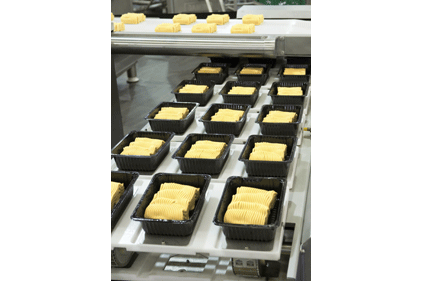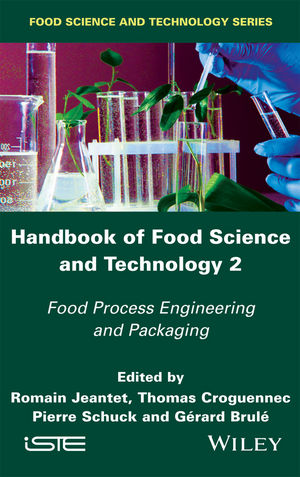It’s not a chicken-or-the-egg question of which came first. Refrigerated and frozen prepared foods predate microwaves.
Yet prepared foods and microwave packaging now enjoy a closer, symbiotic relationship. In fact, microwave meals grabbed the headlines in The NPD Group’s “24th Annual Report on Eating Patterns in America” report in late 2009. The Chicago researcher noted that although Americans are eating at home more – and have been since the beginning of the decade – 2008 marked a turning point as more households prepared their foods in microwaves.
“Microwaving has been flat for two decades, but it increased (in 2008) as Americans found a way to eat at home and not cook,” said Harry Balzer, NPD’s chief food and beverage industry analyst and study author. “We’re using our microwaves to warm and heat more – but not prepare more dishes from scratch.”
NPD said Americans used their microwave ovens more and their stove tops less in 2008. Approximately 20 percent of all meals prepared in U.S. homes from 1990 to 2007 involved the use of a microwave, until 2008, when usage rose ten percent. Balzer said stove tops remain the most popular cooking appliance but the percent of main meals prepared on a stove top dropped from 52 percent in 1985 to 33 percent in 2009.
“There was a lot of speculation last year as to how our eating behaviors changed as a result of the economic crisis. The truth is that consumer behavior changes slowly,” says Balzer. “I’ve observed America’s eating patterns in good and bad economies, and the constant is that there is no recession in eating and Americans don’t want to cook what they eat.”
Approaching the trend from a different angle was The Freedonia Group. This Cleveland researcher projects U.S. frozen food packaging demand will climb 3.7 percent each year through 2013. Officials estimate the market at $5.7 billion in annual sales and say their research factors industry data from 1998, 2008 and 2008.
“Gains will be driven by the popularity of convenience-type foods, the prevalence of microwave ovens, and technological advances in packaging,” said Freedonia. “Frozen food specialties and meat, poultry and seafood will be the fastest growing applications.”
Technology aids trend
How is microwave packaging technology keeping up with consumer demand for quick, convenient food? Refrigerated & Frozen Foods put that question to Tim Bohrer, a 30-year plus packaging industry veteran and founder of Pac Advantage Consulting LLC, Chicago.
Bohrer, a 30-year plus packaging industry veteran and founder of Pac Advantage Consulting LLC, Chicago.
Bohrer says it’s common to have “surges” of patent applications and technical development activity, followed by surges of product commercialization.
“There are industry lulls but then things pick up when you have developments in both food formulation and packaging technology,” he says. “It comes down to having products that consumers want to be able to handle more conveniently and when these developments come together, it spurs the next fad or next generation of microwaveable products.
“There’s give-and-take between food technology and microwave packaging,” he says. “Some of these technologies have been around for awhile. Yet we’ve seen a resurgence in frozen foods, particularly as companies improve the quality of their ingredients.”
Bohrer gives a thumbs up to new Marie Callender’s Multi-Serve Bakes (from ConAgra Foods), which involves microwave shielding and field modification materials that evenly heat the entrée so consumers don’t even have to stop and stir.
Bohrer says he also addressed the International Microwave Power Institute’s recent technical symposium and cited two susceptor-based applications for frozen deep-dish pizza. Bohrer noted that each offering – from Gino’s East and DiGiorno (Nestle Pizza) – successfully used different approaches to heat the deep-dish pizza and deliver a crisp crust.
Elsewhere, Bohrer says microwave steaming now has proliferated with many executions across as many as six distinct film-venting technologies. These range from older, traditional applications requiring the consumer to manually cut a pouch – all the way to valves and and pressure-release materials the use laser scoring.
Meanwhile, Bohrer says new microwave steaming applications have branched into (1) stand-up pouch entrees, (2) a broader number of private label offerings and (3) upscale premium seafood applications.
What's next?
 Asked about near-term developments, Bohrer says there’s more in store.
Asked about near-term developments, Bohrer says there’s more in store.
“We’ll see a continued market expansion. There’s been a burst of activity involving both susceptor and steam packaging and we’ll see even more use of these technologies in 2011,” he says.
“The Marie Callender’s product, in particular, will have a ‘halo’ effect and bode well for other premium, high-quality foods. That product formulation and package delivers nice temperature distribution that mimics the oven and results in a superior product in less time (than a conventional oven).”
With another reference to seafood, Bohrer says industry groups no doubt will debate the best packaging and labeling of raw products intended for microwave use.
Bohrer also points to several opportunities for processors. These include …
… new technologies for breaded, high-moisture products. Maybe the world doesn’t need another chicken nugget – but it could certainly use a better one, says Bohrer. It’s tricky to heat a whole-muscle product so that the breaded outside remains crispy while the inside retains its moisture. A successful product and package would appeal to kids and spur broader applications.
… a single package with both susceptor and steam technologies. Bohrer describes Nestle Prepared Foods’ new (Stouffer’s) soup-and-sandwich offering as interesting because it combines various foods and packages with different heating technologies. He says the next “breakthrough” will involve a multi-component meal with where packaging (with shielding) automatically handles food components that need both steaming and/or crisping.
… communicating a green message. Bohrer says food processors can tout a green, sustainability angle with microwavable foods. Industry and supplier researchers already have studied household appliance energy use and projected that microwaves use as much as 80 percent less energy than a conventional oven. Researchers even have studied microwave energy use between trays with susceptors (which can cook to desired characteristics faster) and trays without susceptors. Their objective: show that susceptor packs require less microwave energy and achieve superior cooking results.
News & notes
Schwan’s taps chef, microwave bag for new line
They say two heads are better than one. That’s why Schwan’s Home Service, Marshall, Minn., says it hired award-winning, nationally recognized chef Jet Tila, to create a new line of Asian-inspired meals for Schwan’s home delivery business. In doing so, Schwan’s also turned to Amazing Food Creations! LLC, a Schaumburg, Ill., company that’s patented a Steamazing! microwaveable brown paper pouch for its own entrees – as well as for contract and private label customers. Amazing Food Creations’ founder and chef Eric Carre says the steam-based system combines sous vide vacuum cooking and microwave popcorn bag technologies.
create a new line of Asian-inspired meals for Schwan’s home delivery business. In doing so, Schwan’s also turned to Amazing Food Creations! LLC, a Schaumburg, Ill., company that’s patented a Steamazing! microwaveable brown paper pouch for its own entrees – as well as for contract and private label customers. Amazing Food Creations’ founder and chef Eric Carre says the steam-based system combines sous vide vacuum cooking and microwave popcorn bag technologies.
New technology for optimum microwaving
 General Mills, Pinnacle Foods and Heinz North America are among those frozen food processors licensing a new technology developed by Microwave Science JV LLC, Los Angeles.
General Mills, Pinnacle Foods and Heinz North America are among those frozen food processors licensing a new technology developed by Microwave Science JV LLC, Los Angeles.
Available on select Kenmore or LG microwaves, new TrueCookPlus is a two-part system. First, it uses software installed onto the microwave ovens by the manufacturer. Officials say the software accounts for cook time variables such as oven temperature, wattage, oven size, voltage, power settings and even location altitude. The second part involves short, simple TrueCookPlus numeric codes that appear on package fronts.
Consumers simply press the microwave’s TrueCookPlus button, enter the related product package code and then press “start.”







